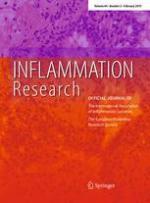Citation:

Abstract:
Abstract: We postulate that the extensive cell and tissue damage inflicted by many infectious, inflammatory and post-inflammatory episodes is an enled result of a synergism among the invading microbial agents, host neutrophils and dead and dying cells in the nidus. Microbial toxins and other metabolites along with the plethora of pro-inflammatory agents released from activated neutrophils massively recruited to the infectious sites and high levels of cationic histones, other cationic peptides, proteinases and Th1 cytokines released from activated polymorphonuclear neutrophils (PMNs) and from necrotized tissues may act in concert (synergism) to bring about cell killing and tissue destruction. Multiple, diverse interactions among the many potential pro-inflammatory moieties have been described in these complex lesions. Such infections are often seen in the skin and aerodigestive tract where the tissue is exposed to the environment, but can occur in any tissue. Commonly, the tissue-destructive infections are caused by group A streptococci, pneumococci, Staphylococcus aureus, meningococci, Escherichia coli and Shigella, although many other microbial species are seen on occasion. All these microbial agents are characterized by their ability to recruit large numbers of PMNs. Given the complex nature of the disease process, it is proposed that, to treat these multifactorial disorders, a “cocktail” of anti-inflammatory agents combined with non-bacteriolytic antibiotics and measures to counteract the critical toxic role of cationic moieties might prove more effective than a strategy based on attacking the bacteria alone.

